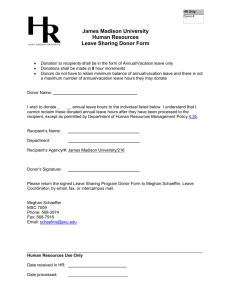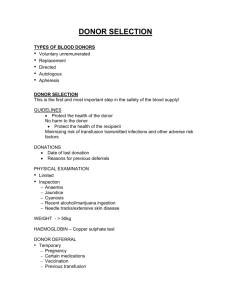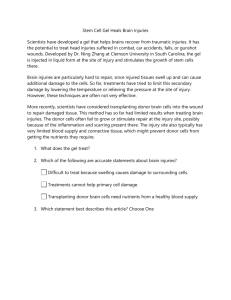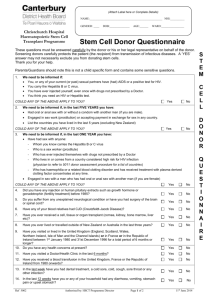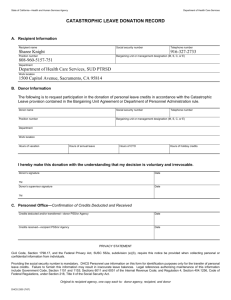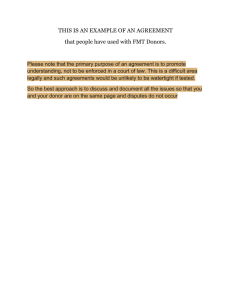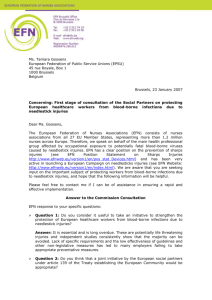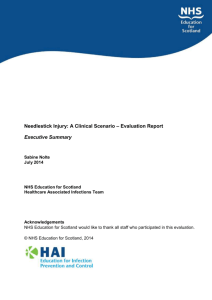Emergency - Needlestick injuries
advertisement
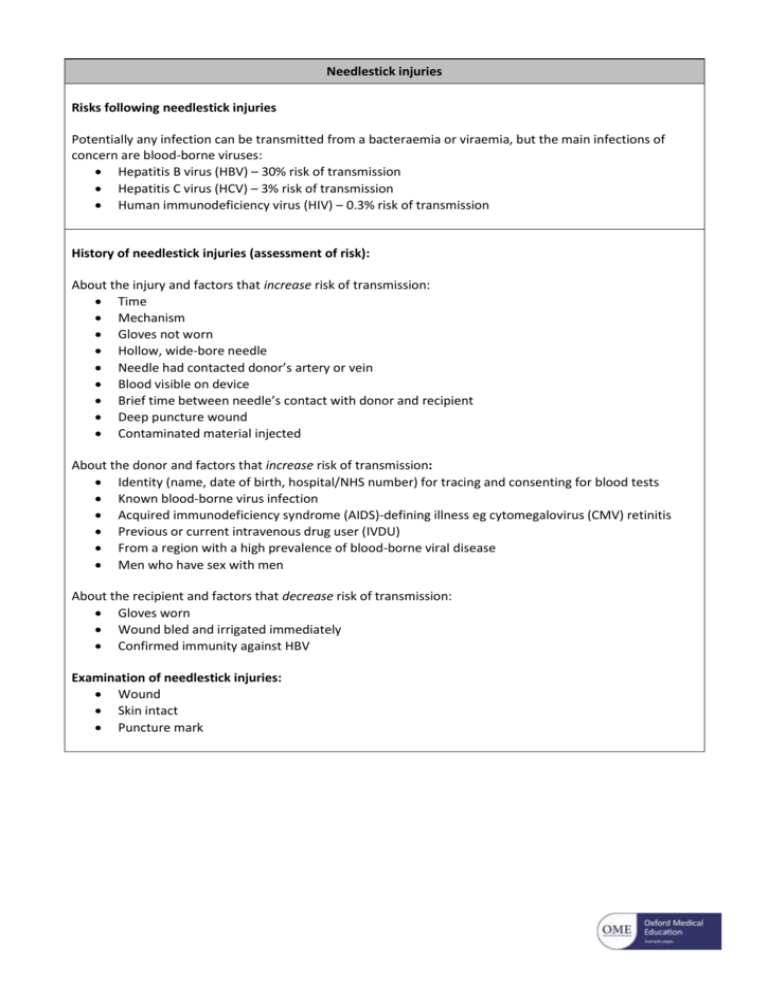
Needlestick injuries Risks following needlestick injuries Potentially any infection can be transmitted from a bacteraemia or viraemia, but the main infections of concern are blood-borne viruses: Hepatitis B virus (HBV) – 30% risk of transmission Hepatitis C virus (HCV) – 3% risk of transmission Human immunodeficiency virus (HIV) – 0.3% risk of transmission History of needlestick injuries (assessment of risk): About the injury and factors that increase risk of transmission: Time Mechanism Gloves not worn Hollow, wide-bore needle Needle had contacted donor’s artery or vein Blood visible on device Brief time between needle’s contact with donor and recipient Deep puncture wound Contaminated material injected About the donor and factors that increase risk of transmission: Identity (name, date of birth, hospital/NHS number) for tracing and consenting for blood tests Known blood-borne virus infection Acquired immunodeficiency syndrome (AIDS)-defining illness eg cytomegalovirus (CMV) retinitis Previous or current intravenous drug user (IVDU) From a region with a high prevalence of blood-borne viral disease Men who have sex with men About the recipient and factors that decrease risk of transmission: Gloves worn Wound bled and irrigated immediately Confirmed immunity against HBV Examination of needlestick injuries: Wound Skin intact Puncture mark Initial investigations after needlestick injuries: Send recipient’s blood for HBV antibody titre and a serum save for possible future baseline HIV/HCV testing Send donor’s blood for HBV antigen, HCV and HIV testing after obtaining informed consent Further investigation after needlestock needlestick injuries: Directed by initial investigations and arranged by occupational health Initial management of needlestick injuries: Encourage bleeding and irrigate copiously if not already done so If donor is known HBV positive, give hepatitis B immunoglobulin (HBIG) if recipient has not been immunised or is a non-responder to immunisation (anti-HB <10 mIU/L) If recipient has not been immunised against HBV, also start accelerated course of hepatitis B vaccine If recipient has been immunised against HBV, give vaccine if it is over one year since last booster If donor is known HIV positive or high risk (see history), give post-exposure prophylaxis (PEP) as soon as possible eg Truvada, Kaletra PEP reduces risk of HIV transmission by around 80% but side effects are common and include nausea, vomiting and diarrhoea PEP is recommended for four weeks but may be discontinued earlier if testing reveals the donor is HIV negative or further information emerges which makes them low risk There is no PEP for HCV; if donor testing is negative, recipient can be reassured; if donor is positive, recipient will require further blood tests Advise barrier contraception for sexual intercourse and refraining from blood donation until seroconversion has been excluded Check tetanus status of donor; needlestick injuries are unlikely to be tetanus-prone; on this assumption, if donor is fully immunised then no further action is required, if donor is partially immunised give booster and refer to GP for completion, and if the donor is unimmunised give first dose and refer to GP for completion Further management of needlestick injuries: Advise next day follow up with occupational health who can arrange consenting and blood testing of donor if not already done so, as well as any subsequent recipient testing and/or boosters Common questions concerning needlestick injuries: What factors increase the risk of blood-borne virus transmission from needlestick injuries? Outline how you would assess and manage a patient who presented with a needlestick injury from a donor who they are concerned may be HIV positive
